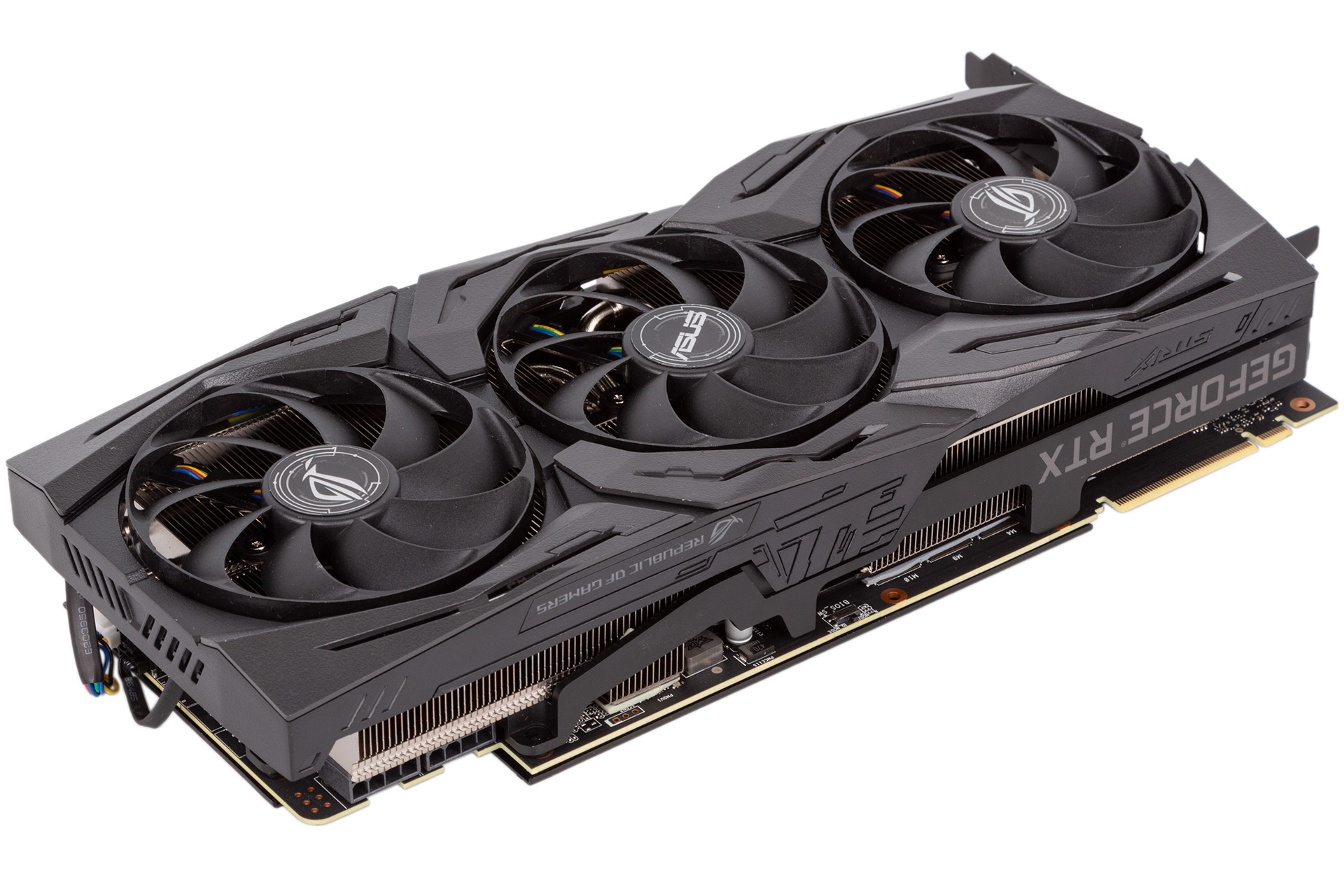Performance Analysis
First up we should note that there is no real raw performance difference between the two BIOS modes. Since clock speeds and power limit are the same and it’s just the fan curve that changes, this isn’t a surprise. Looking closer, though, there are behavioural differences in terms of clock speed, with P Mode delivering 1,935MHz (occasionally a step down to 1,920MHz) and Q Mode dropping to 1,905MHz on account of the higher temperature. It’s possible greater differences would emerge if you fitted the card into a case with poor airflow.
The RTX 2080 ROG Strix OC doesn’t quite ace 4K gameplay thanks to ongoing issues with the Total War: Warhammer II benchmark for Nvidia, but it does make a damn good go of it and will hit 30-60fps on average in most games with the settings jacked up. It’s still best suited to 1440p, we think (or equivalent ultrawide), and at such resolutions you’re looking at a card that can actually make the most of 144Hz in many titles, which is something few can say.
Excluding VRMark Orange Room where cards tested earlier appear to have artificially inflated results, differences between this card and other overclocked RTX 2080s are very slim. You’re looking at roughly four percent uplift over the RTX 2080 Founders Edition (which does have a small overclock of its own), and next to partner cards from MSI and Palit the difference is even smaller at under two percent.

Widening the scope beyond RTX 2080 we note that RTX 2080 Ti FE is a solid 20 percent faster overall. Perhaps the most apt comparison, however, is with AMD’s Radeon VII, over which the Asus card has a seven percent lead overall. As usual this disguises more varied differences that depend on the game. In our benchmarks, half the games (World of Tanks, ME: Shadow of War, and Wolfenstein II) have the RTX 2080 ROG Strix OC comfortably ahead of Radeon VII, but in Battlefield 1, Deus Ex, and Warhammer II the AMD part is right on par and even sometimes ahead.
We don’t have comparable power consumption or temperature data for the other RTX 2080 third-party cards, as they have since left our labs and we changed how measure it, but next to the Founders Edition there is a small bump as a result of the extra overclock on Asus’ card. Power consumption is also lower with our system using this card compared to Radeon VII, despite AMD being on 7nm and being slower overall, although the difference isn’t substantial.
While frame rates are likely to stay very close when comparing the two BIOS modes, fan speeds, noise, and temperatures are significantly different. In P Mode, the fans hit 1,800 RPM, which is noticeable on the ears but quiet and easily tolerable, especially as the temperature delivered is so good and on par with much lower-power cards like MSI’s GTX 1660 Gaming X. Note that in this mode the fans do not switch off when idle, hovering instead at 1,000 RPM i.e. all but silent.
In Q Mode, the temperature goes up by 10°C, but it is still cooler than the RTX 2080 FE, and the fans here cap out at around 1,250 RPM, which is blissfully quiet. You also get the added benefit of actual silence when the card is idle in this mode, as the fans switch off altogether. This is definitely the mode we would run this card in.
Manually overclocked, we were seeing clock speeds of 2,040MHz with voltage listed as the limit – it’s possible some modding would allow the card to run higher, but it did better than any other RTX 2080 we've tested in this arena. It was enough to deliver a six to 10 percent performance improvement, which closed the gap a little more on RTX 2080 Ti FE. Fan speed and temperature did go up but not by much in either case.
Conclusion
Massive, heavy, and over-engineered, this is an absurdly over the top graphics card, but it’s one we can’t help but love a bit. The ROG Strix line of graphics cards has never been about value for money, and we’ve consistently pulled it up on this when it comes to more bang for buck GPUs, but for RTX 2080 it’s easier to overlook. Of course, that’s not going to stop us from pointing out that there are plenty of better value RTX 2080s on the market that will have low noise output and low temperatures; you don’t need to spend this much if those are your two priorities. You could even get a card plus a water block for this money. You might be tempted by the £650 Radeon VII, but the cooler is too loud for us to recommend that card. Finally, another option would be to just save a bit more and get a half-decent RTX 2080 Ti.

With that said, the RTX 2080 ROG Strix OC is great from every angle. The build quality is exceptional from the PCB through to the heatsink and fans, the RGB lighting implementation is sensible, and there are neat enthusiast-grade features like dual-BIOS and the RGB and fan headers. The cooler comes apart easily, so adding a water block at a later date shouldn’t be too much hassle. The latest Strix cooler design may be monstrous, but it certainly delivers the goods and can be easily set to prioritise noise or thermals.
It’s not perfect, however. The exposed cabling is a little sloppy on Asus’ part, and we’d like Asus to start ensuring that Strix OC cards are the fastest out-of-box offerings (or joint fastest at least) to help further justify the hefty pricing. Semi-passive fans should also be a given regardless of BIOS, and why no memory overclock?
Nevertheless, this is a beast of a card and exactly the sort of product our Extreme award was made for. It’s not a sensible purchase, and we’re not recommending you actually buy it, but if you did you’d hardly be disappointed by the quality.


MSI MPG Velox 100R Chassis Review
October 14 2021 | 15:04









Want to comment? Please log in.